Want to skyrocket your gym’s competitive edge? Unleash the transformative power of rope pull machines today!
With years of experience in gym equipment analysis and consulting, we’re in a prime position to guide you through the ins and outs of this machine.
Through this ultimate guide, you will learn about rope pull machines to enhance your gym’s value and stay competitive in the industry.
Keep reading to elevate your gym’s status through informed equipment choices.
Table of Contents
1. Understanding the Rope Pull Machine
A rope pull machine is a versatile piece of gym equipment designed to mimic the action of pulling a rope. It offers a non-impact total body workout focusing on both cardio and muscle building. Unlike traditional strength training machines, the rope pull engages multiple muscle groups simultaneously thereby offering a comprehensive workout.
Adding a rope pull machine to your gym’s inventory opens avenues for various training regimens, from HIIT to endurance exercises. It is relatively low-maintenance compared to other specialized equipment and can be used by beginners and experts alike. It’s a strong selling point for gym memberships attracting a wide range of fitness enthusiasts.
2. Benefits of Rope Pull Machine Workouts
Investing in rope pull machines enhances your facility’s workout offerings. These machines offer a range of valuable benefits for marketing to gym owners and promoting sales for distributors. Here are some key benefits to consider:

- Full-Body Workout: Rope pull machines offer a comprehensive full-body workout. They engage multiple muscle groups simultaneously, offering a well-rounded exercise session.
- Cardiovascular Health: The rope pull machine is excellent for cardiovascular conditioning. Consistent workouts can improve heart health and overall stamina.
- Enhanced Endurance: Regular use of the rope pull machine can boost endurance. This is ideal for athletes or anyone looking to improve their long-term exercise performance.
- Improved Grip Strength: Working with rope pull machines can significantly enhance grip strength. A strong grip is beneficial in various sports and daily activities.
- Flexibility: The machine allows for a variety of pulling directions, aiding in overall body flexibility. Users can perform vertical, horizontal, and diagonal pulls.
- Muscle Tone and Definition: Regular use can result in better muscle tone and definition. This is a selling point for gyms aiming to attract a clientele interested in body aesthetics.
- Low Impact: Rope pull exercises are low-impact, making them suitable for people with joint issues. The machine allows for effective workouts without putting undue stress on the knees or back.
- Burns Calories: A session on the rope pull machine can burn a significant number of calories. This makes it an ideal choice for those interested in weight loss.
- Enhanced Core Stability: The machine encourages core engagement during workouts. A strong core is essential for balance and overall functional fitness.
- Improved Coordination: Rope pull exercises can enhance hand-eye coordination. This is particularly beneficial for athletes or individuals involved in sports that require precise timing.
- Mental Toughness: Enduring a challenging rope pull session can build mental toughness. This psychological resilience is transferable to other areas of life and sport.
- Time-Efficient: Rope pull machine workouts are incredibly time-efficient. Users can achieve significant results in short workout sessions, a valuable asset in today’s fast-paced world.
- Customizable Workouts: The machines often come with adjustable resistance settings. This feature allows users to customize workouts to suit their fitness levels.
- Minimal Learning Curve: Rope pull machines have a relatively low learning curve. This ease of use is attractive to newcomers, making it a useful addition to gyms looking to expand their customer base.
- Space-Efficient: The compact design of most rope pull machines makes them space-efficient. This is beneficial for gyms with limited square footage.
Understanding these benefits can provide your business with an edge in a highly competitive market. Whether you’re focused on equipping a new gym or diversifying your distribution portfolio rope pull machines are a sound investment.
3. Types of Rope Pull Machines
When it comes to investing in a rope pull machine for your gym or fitness center, understanding the variety of types available is crucial. Knowing the unique features and benefits of each type can guide you in making a decision that aligns with your facility’s goals and customer demands. Here are several essential aspects to remember:
Endless Rope Machines
Endless rope machines feature a continuous loop of rope, offering users an uninterrupted workout experience. These machines are extremely versatile and can be adapted to serve a wide range of fitness levels. In terms of user engagement, the endless system allows for high-intensity workouts, making it a favorite for those who prefer challenging sessions.
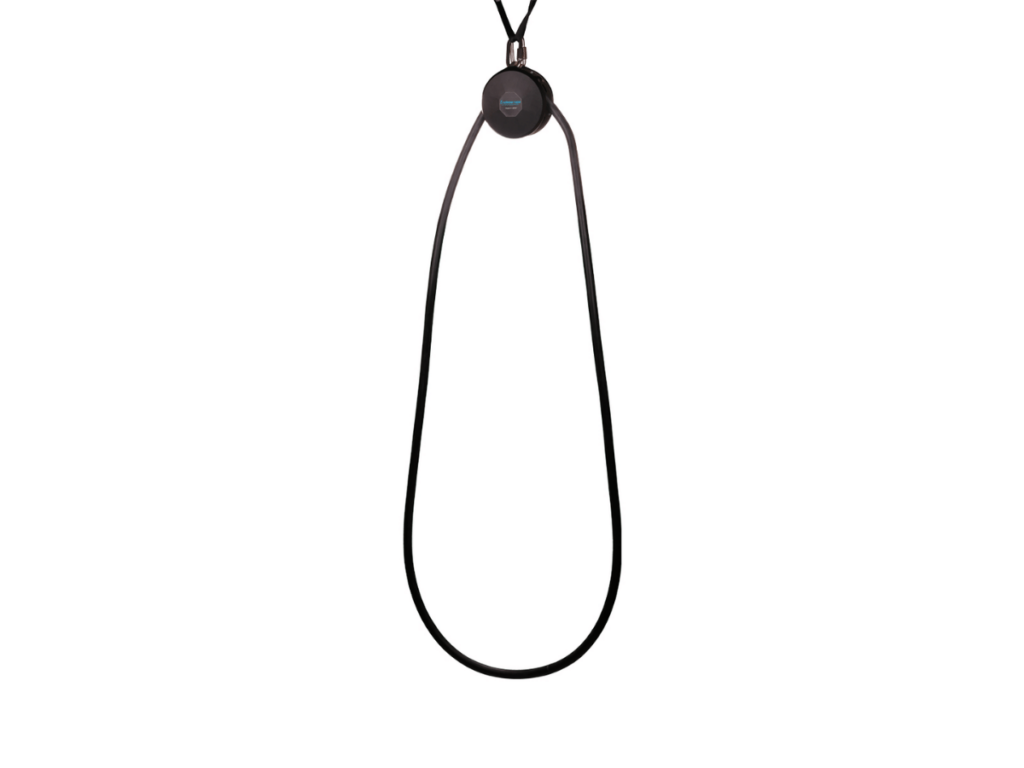
Advantages:
- Provides a continuous, smooth workout experience for users.
- Space-efficient design is suitable for smaller gyms.
- Customizable resistance settings to suit all fitness levels.
- Low maintenance requirements.
- Offers high ROI due to user popularity.
Challenges:
- Higher initial cost compared to traditional rope systems.
- May require regular calibration for optimal performance.
- Limited to mainly upper body workouts.
- Some users may find it less authentic than traditional ropes.
- It can be difficult to repair if issues arise.
Vertical Rope Pull Machines
The vertical models offer a unique simulation of climbing activities, providing a workout experience that’s both challenging and engaging. These machines tend to attract users who are looking for functional strength and conditioning. Take rock climbing, for example, which is trending nowadays. These machines can give your gym a modern edge.
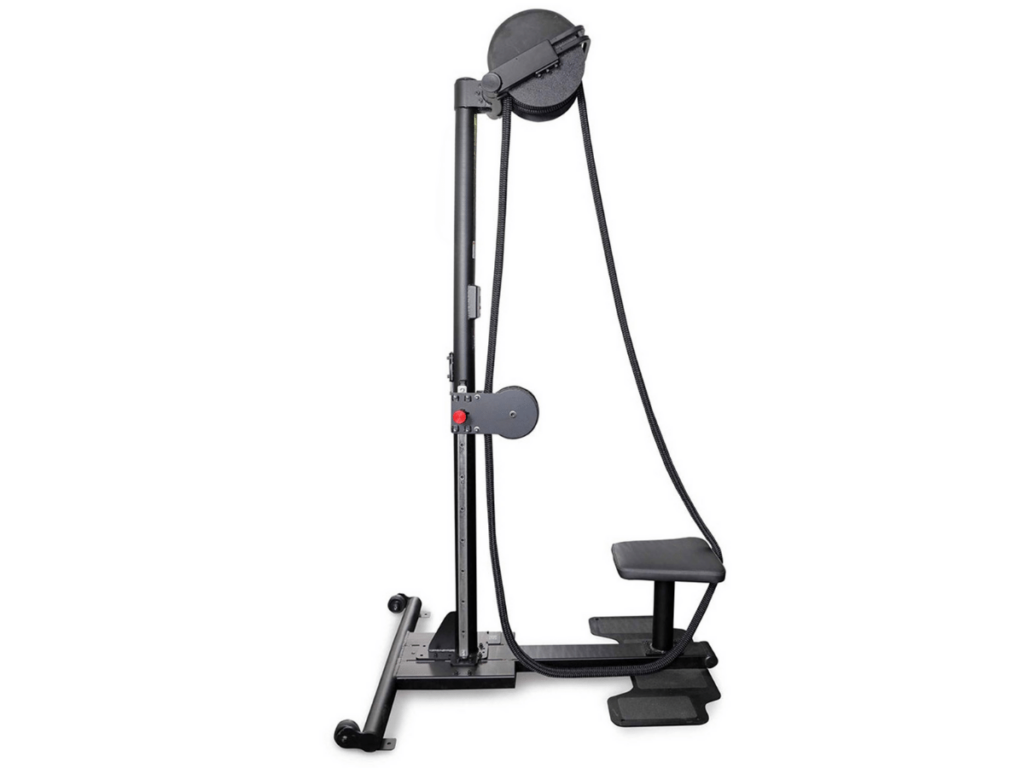
Advantages:
- Target multiple muscle groups including the core.
- Adjustable height features accommodate different user sizes.
- Generally durable and long-lasting.
- Easier to integrate into circuit training programs.
- Good for both beginner and advanced users.
Challenges:
- Takes up vertical space, which can limit installation options.
- Slightly steeper learning curve for new users.
- May require additional safety precautions.
- Limited by only vertical pulling motions.
- Potential for mechanical issues in height-adjustment mechanisms.
Horizontal Rope Pull Machines
Horizontal rope pull machines lay flat and allow pulling exercises from a seated or standing position. This versatility makes them a popular choice for gyms that offer a range of group classes or personal training sessions. The horizontal layout is ideal for rowing simulations, engaging both the upper and lower body.
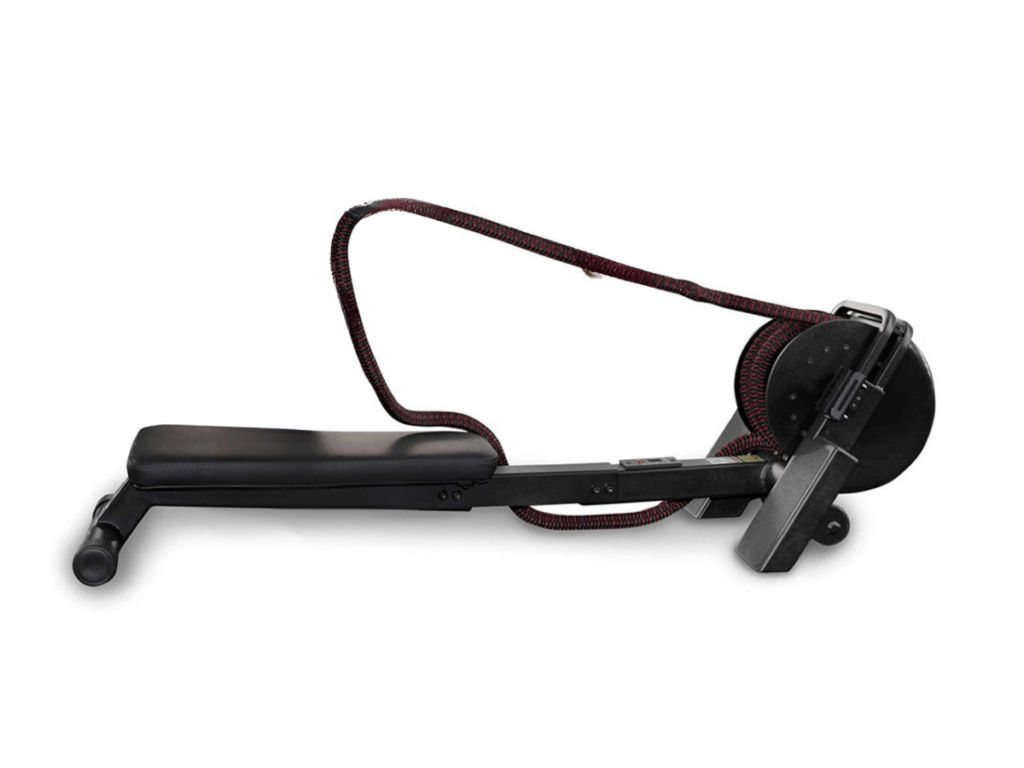
Advantages:
- Excellent for building lateral strength and stability.
- Compact and easy to store.
- Versatile workout options for different muscle groups.
- Ideal for HIIT and cardio workouts.
- User-friendly interface for quick setting adjustments.
Challenges:
- May require specialized flooring or a setup area.
- Not as comprehensive for full-body workouts.
- Requires regular maintenance for moving parts.
- Limited weight resistance options.
- Some models may lack durability.
Wall-Mounted Rope Machines
For facilities with limited floor space, wall-mounted models are an excellent choice. They offer similar benefits to free-standing units but are more space-efficient. I believe this makes them ideal for smaller gyms or multifunctional fitness spaces.
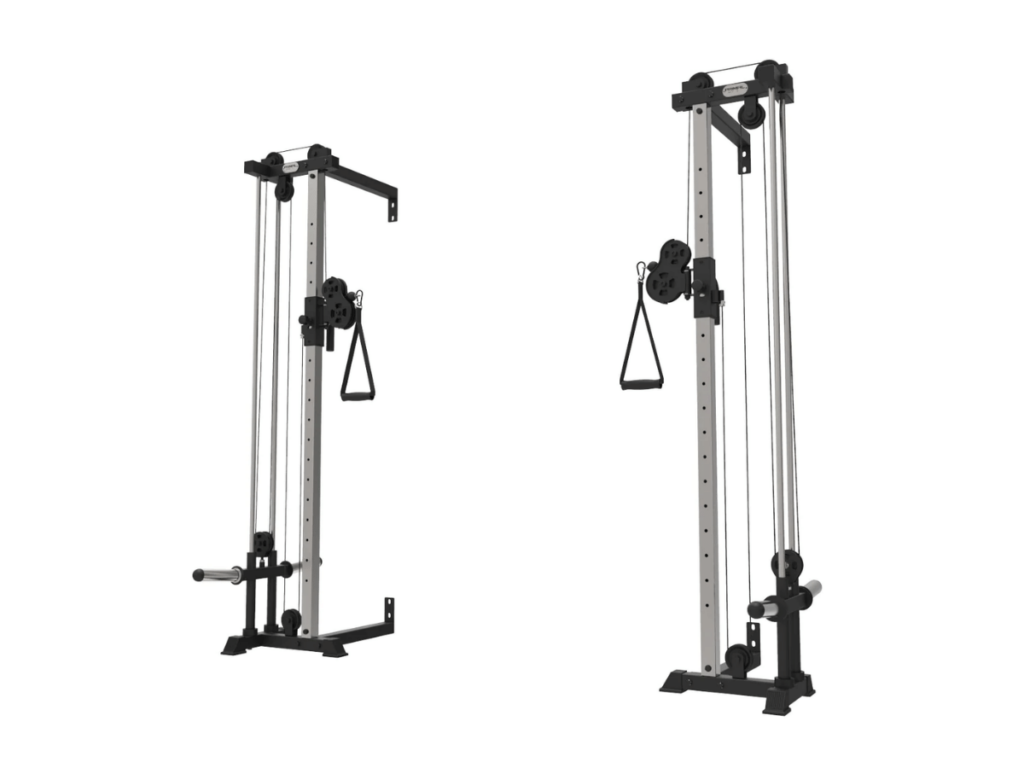
Advantages:
- Maximizes floor space by utilizing wall area.
- Easy to incorporate into existing gym setups.
- Generally lower cost than freestanding units.
- Solid build ensures longevity.
- Excellent for quick, intense workouts.
Challenges:
- Requires sturdy walls for secure mounting.
- Not easily moved once installed.
- May limit the types of exercises performed.
- Not suitable for gyms with weak or unsuitable walls.
- Installation can be time-consuming and costly.
Manual Rope Machines
Manual rope machines rely solely on the user’s effort for resistance, providing a raw and intense workout. These machines usually lack an electric motor, which means they require less maintenance. They are often less expensive, making them accessible for gym owners on a tight budget.
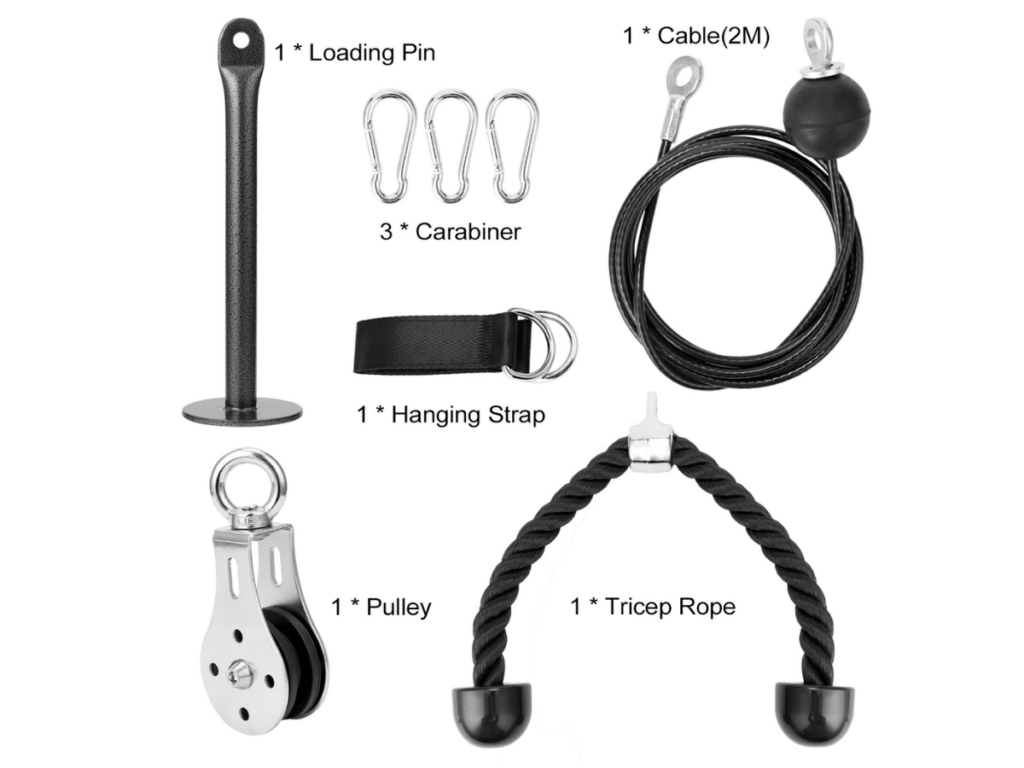
Advantages:
- No electricity is required, reducing operating costs.
- Offers a more “authentic” rope-pulling experience.
- Easy to install and use.
- Minimal maintenance needs.
- Environmentally friendly option.
Challenges:
- Lacks the automated features of electronic models.
- Limited to the user’s own strength and endurance.
- May require manual adjustment for tension settings.
- No built-in tracking features for performance metrics.
- Users may find it less engaging.
Hybrid Rope Machines
Hybrid models combine features of both strength and cardio equipment, making them particularly versatile. They often include additional handlebars or footplates, allowing users to engage multiple muscle groups. These machines cater to those who seek an all-in-one workout solution.
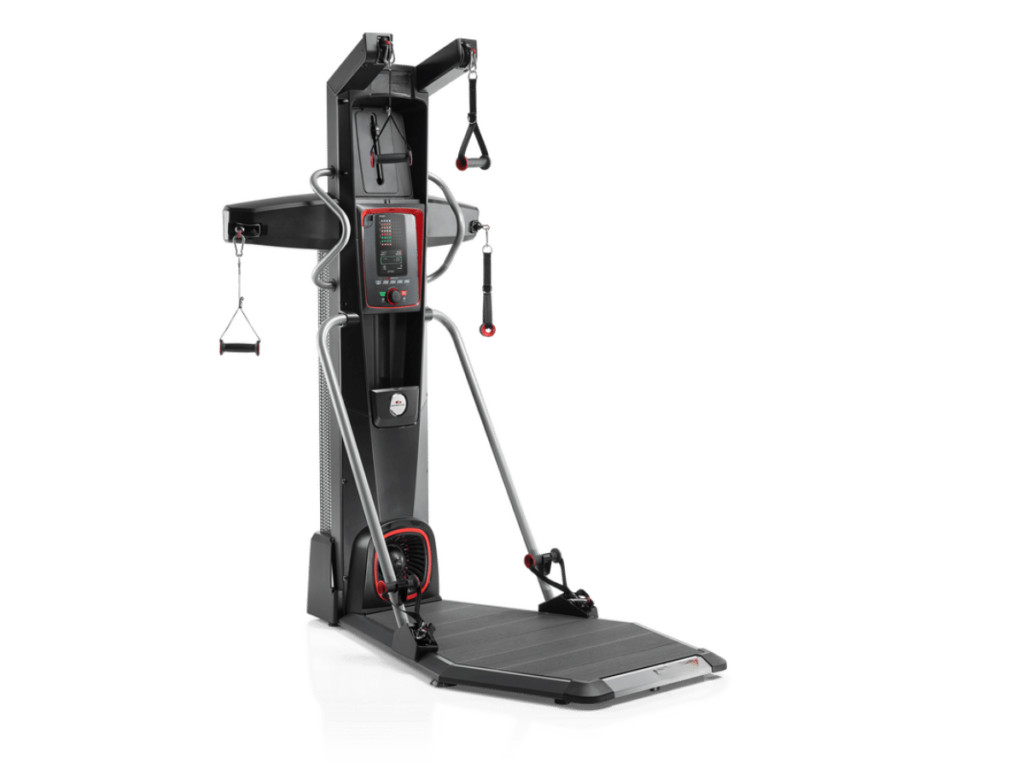
Advantages:
- Combines elements of manual and electronic systems.
- Allows for a broader range of exercises.
- Adjustable settings cater to all fitness levels.
- Provides both cardio and strength training options.
- Built-in tracking features for enhanced user engagement.
Challenges:
- Higher cost due to multiple functionalities.
- Requires more complex maintenance.
- Takes up more floor space compared to simpler models.
- May involve a learning curve for users.
- It could be overwhelming for beginners.
Commercial Rope Machines
Specifically designed for high-traffic gym environments, commercial rope machines are built for durability and extended use. One example is their advanced performance tracking systems and customizable features. The robust build assures longevity, making it a wise long-term investment for gym owners. For distributors and wholesalers, commercial machines offer the advantage of bulk sales to larger fitness facilities.
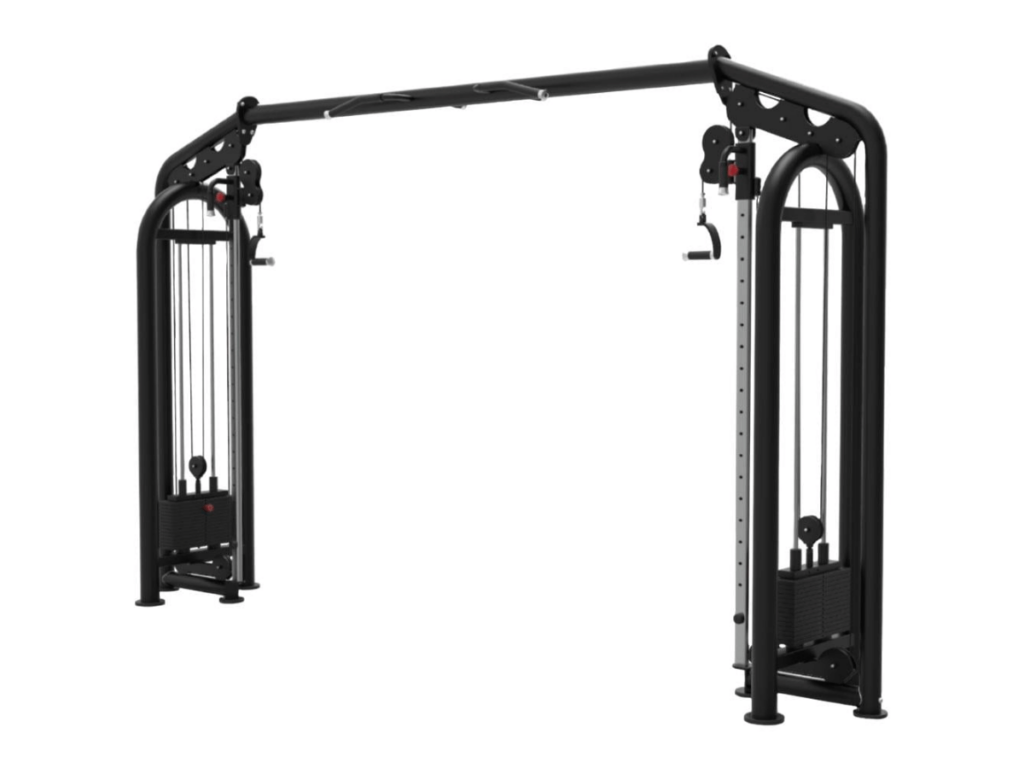
Advantages:
- Built for heavy, consistent use in commercial settings.
- Offers the highest durability among the types.
- Includes advanced features for serious athletes.
- Multiple users can use it simultaneously.
- Excellent for building gym reputation and attracting clientele.
Challenges:
- Significantly higher initial investment.
- May require specialized technicians for maintenance.
- Takes up considerable space.
- Energy consumption can be higher.
- Overkill for smaller gyms or less frequent usage.
By understanding these different types of rope pull machines, you can make a more informed choice for your gym or distribution business. The right type will align with your objectives, whether it’s versatility, space efficiency, or specialized training offerings.
4. Basic Techniques and Starting Points
Navigating the world of rope pull machines necessitates a good grasp of basic techniques and appropriate starting points. For gym owners, this knowledge is vital not just for personal use but for guiding clients and setting up instructional sessions. Distributors should be well-versed in these basics as well. See the following:
Grip Techniques
One of the first elements to master on a rope pull machine is the grip. Utilizing the correct grip can dramatically affect the efficiency of the workout and reduce the risk of injury. There are primarily two types of grips: overhand and underhand, and each targets different muscle groups.
This versatility will make your rope pull machines more appealing to a diverse clientele. Distributors can use this information to pitch the equipment suitable for all levels, from beginners to seasoned athletes.
The table below provides insights into the primary grip techniques used on a rope pull machine, focusing on their benefits, targeted muscle groups, and implications for gym owners, distributors, and wholesalers.
| Grip Technique | Description | Targeted Muscle Groups | Benefits & Unique Selling Points for Distributors |
| Overhand Grip | The palm faces downwards while gripping the rope, with fingers wrapping around the rope from the top. | Latissimus dorsi, Middle and upper trapezius, Forearms | Versatility: Engages a broader set of muscles, allowing for comprehensive back workouts. Stability: Provides a secure grip, ideal for heavy or fast pulls. |
| Underhand Grip | The palm faces upwards, with fingers coming from underneath to grip the rope, often likened to a chin-up grip. | Biceps brachii, Lower lats, Rhomboids | Focused Activation: Targets biceps and lower back muscles for more isolated workouts. Variation: Introduces a different pulling dynamic, enhancing exercise diversity. |
Speed Variation
Another crucial technique is altering the speed of pulling. Fast pulls target aerobic conditioning, while slow, deliberate pulls focus on muscle endurance and strength. Knowing when and how to switch speeds can transform a routine session into a dynamic workout.
Educators or trainers can integrate this into group classes or personal training sessions, adding value to your gym’s service offerings. Distributors should highlight this versatility when marketing these machines to potential clients.
Directional Pulling
Pulling the rope in various directions can engage different muscle groups. Horizontal pulls work on the back and shoulders, while vertical pulls engage the biceps and triceps. Understanding directional pulling allows users to tailor their workout according to their specific goals.
For gym owners, signage or QR codes linking to instructional videos next to the machine can assist in educating the user. Distributors can package these educational materials with the machines as a complete “training package,” making it more marketable to gym owners.
Resistance Settings
Using the appropriate resistance level is essential for an effective workout. Higher resistance levels focus on building muscle mass, while lower resistance is excellent for endurance and cardio training. Understanding these settings can make workouts more efficient and goal-oriented.
Gym owners should ensure that their staff is well-versed in advising clients on appropriate resistance settings. For distributors, focusing on the range of resistance levels offered by different models can be a strong selling point, particularly for gyms looking to cater to a diverse clientele.
Starting Positions
Understanding the different starting positions can also impact the effectiveness of a workout. Some machines offer seated, standing, or even kneeling options. These starting positions can vary the targeted muscle groups and intensity of the workout.
For distributors, the multiple starting positions can be highlighted as an advantage when negotiating with gym owners, especially those looking to offer a wide array of workout options.
By mastering these basic techniques and starting points, both gym owners and distributors can enhance their services and product offerings.
5. Common Mistakes and How to Avoid Them
Even with high-quality equipment and well-informed staff, mistakes are bound to happen—especially with specialized machinery like rope pull machines. Here are a few focal aspects to always remember:

- Ignoring Safety Measures: Neglecting safety protocols is a common but dangerous mistake. Always ensure that the machine’s safety features are functional and educate clients to use them correctly.
- Overlooking Warm-Up: Skipping the warm-up phase can lead to strains and injuries. Incorporate a brief 5-minute warm-up routine that engages the relevant muscle groups before using the machine.
- Incorrect Grip: Using the wrong grip can cause hand fatigue or even lead to injury. Ensure that gym-goers are educated on how to use an overhand or underhand grip correctly, depending on their exercise goal.
- Overdoing Speed and Resistance: Excessive speed and resistance can lead to muscle strains. Guide clients to start at a moderate pace and resistance, gradually scaling up as they become more comfortable.
- Poor Posture: A hunched or twisted posture can result in back pain or other issues. Educate patrons to maintain a straight back and aligned shoulders for effective, injury-free workouts.
- Ignoring Directional Pulling: Sticking to one direction of pulling can result in muscle imbalances. Advocate for mixing up directional pulls to get a more balanced workout.
- Monotonous Routine: Performing the same exercises every day reduces the workout’s efficacy. Encourage clients to switch up routines to target different muscle groups and maintain engagement.
- Neglecting Core Engagement: Failing to engage the core can compromise workout efficacy. Instruct users to tighten their core during pulls for a more effective workout and better balance.
- Overtraining: Overuse of the rope pull machine can lead to fatigue and increased risk of injury. Advise clients to incorporate rest days and cross-training into their fitness schedule.
- Ignoring End-of-Session: Many overlook the importance of a proper cooldown. Stress the need for a few minutes of stretching and slowing down at the end of each session to avoid muscle cramps and facilitate recovery.
In summary, avoiding these common pitfalls will drastically improve workout efficiency and safety.
Conclusion
To wrap it up, we’ve covered the essentials of rope pull machine workouts, exploring different machine types, their benefits, and how to optimize their use. Whether you’re a gym owner or a distributor, this guide is designed to equip you with the knowledge to make well-informed decisions for your business needs.
Related articles:








